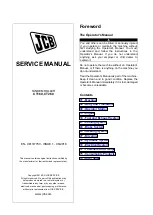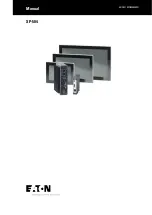
105564-UIM-A-0205
Unitary Products Group
15
COMBUSTION AIR SUPPLY
All installations must comply with Section 5.3, Air for Combustion and
Ventilation of the National Fuel Gas Code, ANSI Z223.1 or Sections
7.2, 7.3 or 7.4 of CAN/CGA B149.1 or .2 Installation Code - latest edi-
tions.
This furnace is certified to be installed with one of three possible com-
bustion air intake configurations.
1.
OUTDOOR COMBUSTION AIR:
This is a sealed combustion air
configuration where the combustion air is supplied through a PVC
or ABS pipe that is connected to the PVC coupling attached to the
burner box and is terminated in the same atmospheric zone as the
vent. This type of installation is approved on all models. Refer to
Figure 19.
2.
AMBIENT COMBUSTION AIR:
Combustion air is supplied from
the area surrounding the furnace through vents or knockouts in the
furnace casing. The combustion air and the vent pipes are not ter-
minated in the same atmospheric zone. Refer to Figure 13 for vent
terminations. Refer to “AIR SOURCE FROM INSIDE THE BUILD-
ING” and “VENT AND SUPPLY AIR SAFETY CHECK” for proper
installation. Refer to Figure 20.
3.
VENTILATED COMBUSTION AIR:
Combustion air is supplied
through a PVC or ABS pipe that is connected to the PVC coupling
attached to the burner box and is terminated in a ventilated attic or
crawl space. The combustion air and the vent pipes are not termi-
nated in the same atmospheric zone. Refer to Figure 22 for attic
and crawl space termination. Only the combustion air intake may
terminate in the attic. The vent must terminate outside.
Outdoor Combustion Air
Combustion Air Intake/Vent Connections
This installation requires combustion air to be brought in from outdoors.
This requires a properly sized pipe (Shown in Figure 19) that will bring
air in from the outdoors to the furnace combustion air intake collar on
the burner box. The second pipe (Shown in Figure 19) is the furnace
vent pipe.
The combustion air intake pipe should be located either through the
wall (horizontal or side vent) or through the roof (vertical vent). Care
should be taken to locate side vented systems where trees or shrubs
will not block or restrict supply air from entering the terminal.
Also, the terminal assembly should be located as far as possible from a
swimming pool or a location where swimming pool chemicals might be
stored. Be sure the terminal assembly follows the outdoor clearances
listed in Section #1 “Outdoor Air Contaminants.”
Ambient Combustion Air Supply
This type installation will draw the air required for combustion from
within the space surrounding the appliance and from areas or rooms
adjacent to the space surrounding the appliance. This may be from
within the space in a non-confined location or it may be brought into the
furnace area from outdoors through permanent openings or ducts. It is
not piped directly into the burner box. A single, properly sized pipe from
the furnace vent connector to the outdoors must be provided. For
upflow models combustion air is brought into the furnace through the
unit top panel opening. Do not install a pipe into the intake collar on top
of the burner box. Refer to Figure 20.
FIGURE 17:
Double Horizontal Sealed Combustion Air and Vent
Termination
FIGURE 18:
Double Vertical Sealed Combustion Air and Vent
Termination
VENT
2”
COMBUSTION AIR
6”
FIGURE 19:
Sealed Combustion Air Intake Connection and Vent
Connection
FIGURE 20:
Combustion Airflow Path Through The Furnace Casing
CONNECTS TO
COLLAR ON TOP
OF BURNER BOX
VENT PIPE CEMENTS
INTO SOCKET JUST
ABOVE TOP PANEL
OR VENT PIPE MAY
BE CLAMPED INTO
OUTLET OF DRAIN
COUPLING
VENT PIPE CEMENTS
INTO SOCKET JUST
ABOVE TOP PANEL
COMBUSTION AIR
OR VENT PIPE MAY
BE CLAMPED INTO
OUTLET OF DRAIN
COUPLING














































